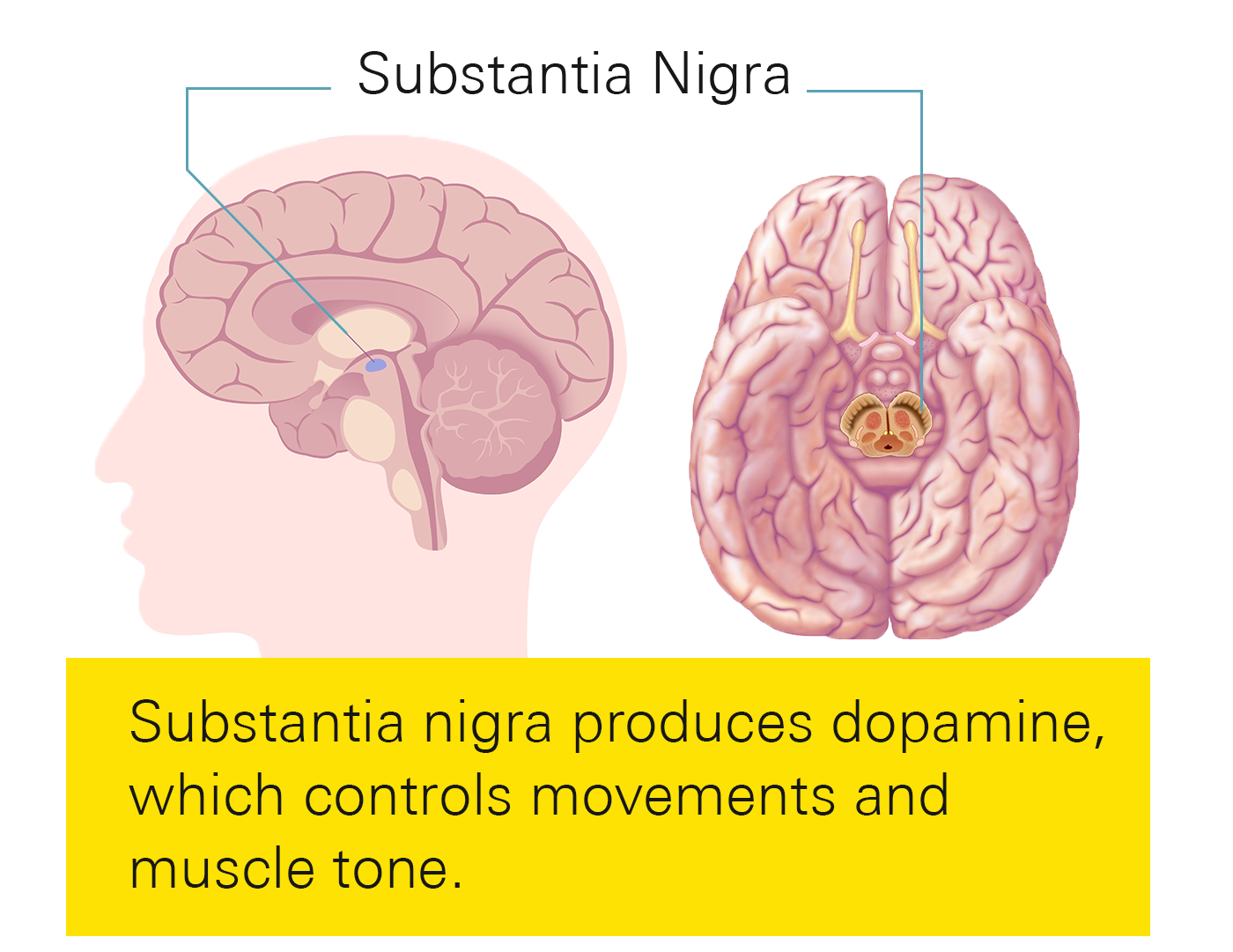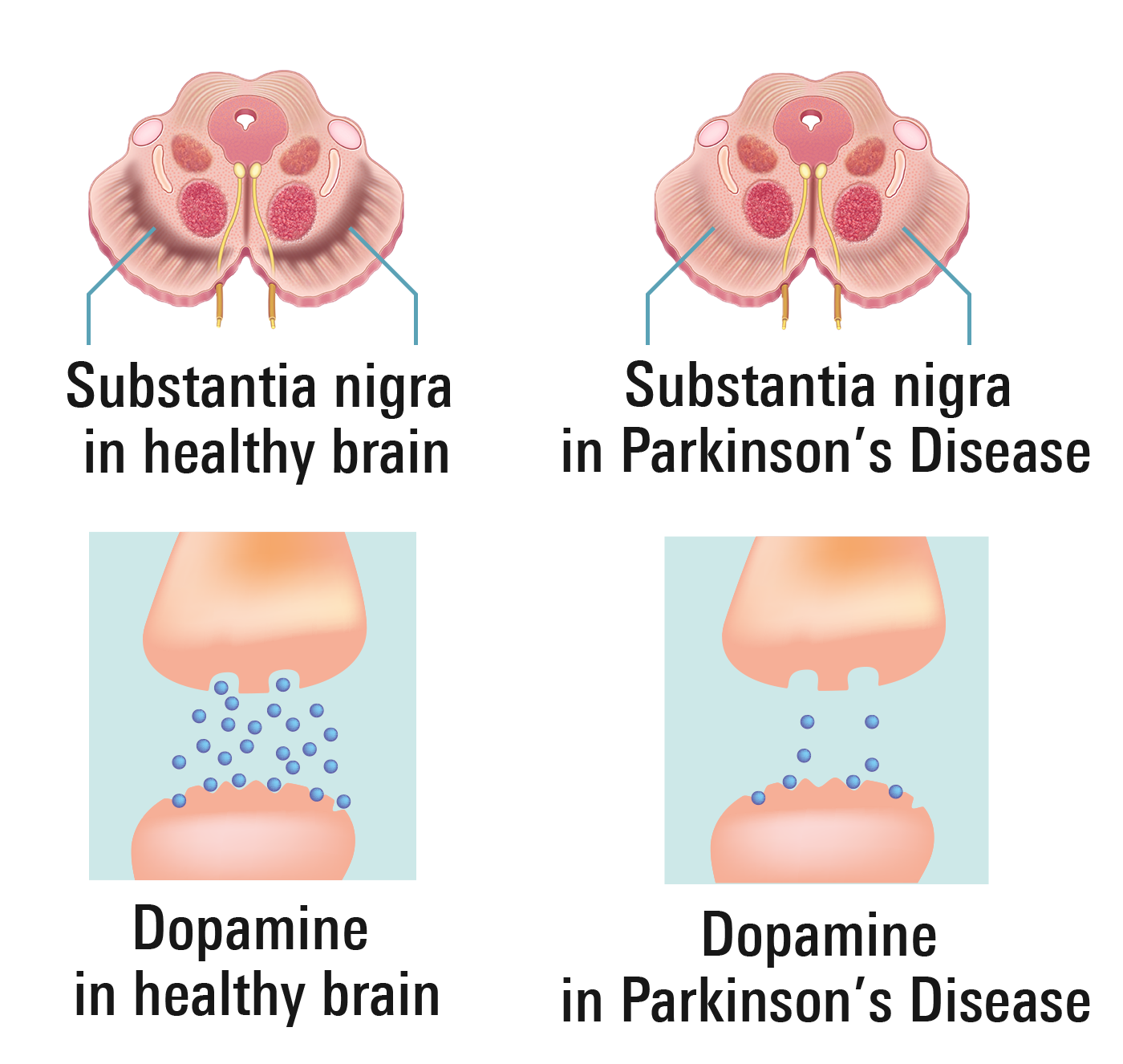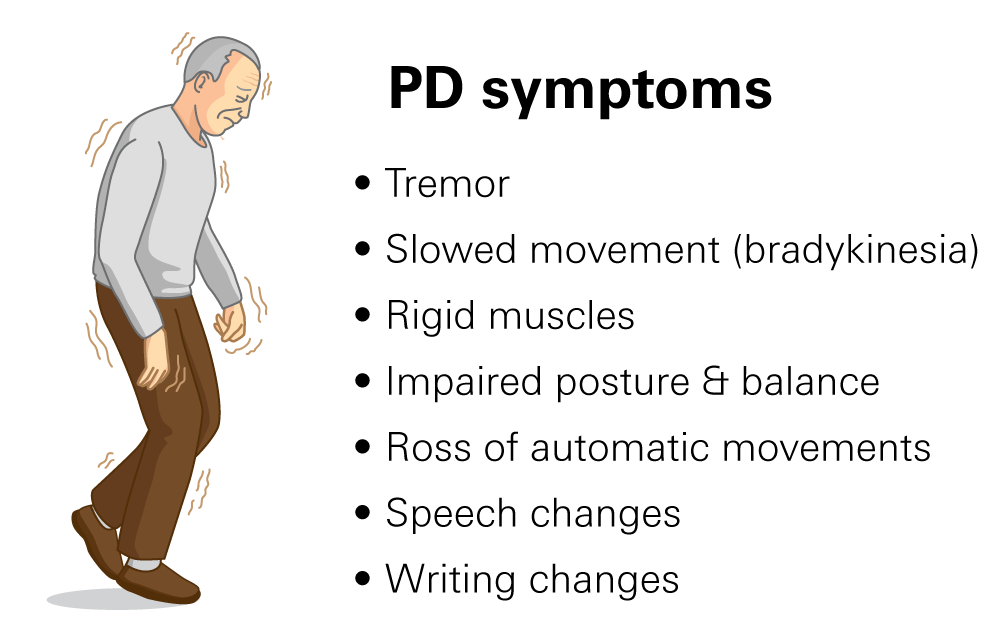Parkinson's Disease and medication options
Parkinson’s Disease (PD) is a neurological brain disorder. This brain condition typically develops after the age of 65, though approximately 15% of cases are diagnosed before the age of 50 years old. PD may affect anyone, however some data suggests that men are more likely than women to be affected by it.
What Causes Parkinson’s Disease?
PD occurs when neurons in the substantia nigra (a part of your brain) die or become impaired. These cells produce a neurotransmitter called dopamine, which allows smooth, coordinated function of your body muscles, movement, and balance, and sends movement instructions to other parts of your brain.


This indicates that the area of the brain responsible for directing movement cannot function as it should, causing your movements to become delayed and unconventional. When the majority of the dopamine-producing cells (approximately 80%) are damaged, the motor symptoms of PD appear.
What are the Symptoms of Parkinson’s Disease?
A decrease in dopamine causes fewer instructions sent to your brain, resulting in movement problems, which are referred to as motor symptoms.
PD has 4 major symptoms:
- Rigidity: when the muscles in your legs, arms, trunk, and face become stiff and contracted for an extended period
Appear to have a mask-like facial expression - Tremor: trembling/shaking that occurs in your hands, arms, legs, jaw, or head, even when resting
Initially, a tremor appears on one side of your body (unilateral); it will eventually spread to both sides of your body (bilateral). - Akinesia/bradykinesia: lack of/slow start in movements
- Postural instability: imbalance and/or falls

Other symptoms:
- Small, cramped handwriting
- Shuffling walk and stooped posture
- Muffled speech, drooling, or difficulty swallowing
- Skin conditions
- Low mood, depression, and other changes in emotions, such as anxiety
- Constipation and/or incontinence (inability to control urination)
- Loss of sense of smell
- Difficulty sleeping
- Blinking less often than usual
- Orthostatic hypotension (low blood pressure when standing up)
The condition will continue to worsen, including prolonged periods of "off time," even with high doses of PD medicines. This occurs when the disease's symptoms intensify before the next dose of treatment is scheduled to be taken. One of the most aggravating features of having the illness is having an "off" episode with stiff muscles, delayed motions, and difficulties commencing movements. Individuals may lose their ability to walk, feed themselves, and swallow food as symptoms advance to severe impairment.
How is Parkinson’s Disease Treated?
PD currently has no known cure, although there are treatments that can aid with symptom relief and quality of life maintenance. Medications are used to improve movement, which also helps related issues, such as constipation.
As symptoms of Parkinson's disease are typically minor in the early stages, you might not require any treatment. To monitor your condition, you may require frequent appointments with your healthcare provider.
3 main types of medication commonly used for PD
Carbidopa/Levodopa (brand: Sinemet, Sinemet CR, Rytary)
- Sinemet immediate-release (IR): 25/100 mg taken by mouth three times a day (starting dose.)
- Sinemet controlled-release (CR): 50/200 mg taken by mouth twice a day (starting dose). Tablet can be cut in half, but should not be crushed or chewed.
- Rytary: start at 23.75/95 mg taken by mouth three times a day. This medication can be taken whole or sprinkled on a small amount of applesauce.
- Levodopa is a prodrug that is converted to dopamine by DOPA decarboxylase and can cross your blood-brain barrier, making it the most effective drug.
- Carbidopa is given with levodopa to prevent it from getting broken down during metabolism before it reaches your brain and provides efficacy.
- Initial treatment with carbidopa/levodopa is sometimes better tolerated in older individuals than the dopamine agonists.
- Common side effects
- Nausea
- Dizziness
- Low blood pressure when standing up
- Dyskinesia
- Dry mouth
- Confusions
- Hallucinations
- Psychosis (disconnection from reality)
- Can cause brown, black, or dark discoloring of urine, saliva, and/or sweat, and can discolor clothing
Dopamine agonists
This drug class of medications is typically used for initial treatment in younger individuals, and eventually in most individuals.
As the disease progresses, treatment will be directed at both reducing “off” periods and limiting dyskinesias (abnormal involuntary movements).
- Pramipexole (Mirapex, Mirapex ER)
- Mirapex IR: start with 0.125 mg taken by mouth three times a day, can be titrated weekly to a max of 1.5 mg three times a day.
Mirapex IR is also approved for the treatment of restless leg syndrome (RLS) - Mirapex IR: start with 0.125 mg taken by mouth three times a day, can be titrated weekly to a max of 1.5 mg three times a day.
Mirapex IR is also approved for the treatment of restless leg syndrome (RLS)
- Mirapex IR: start with 0.125 mg taken by mouth three times a day, can be titrated weekly to a max of 1.5 mg three times a day.
- Ropinirole (Requip, Requip XL)
- Requip IR: start with 0.25 mg taken by mouth three times a day, can be titrated weekly to a max of 8 mg three times a day
This medication is also approved for the treatment of restless leg syndrome (RLS) - Requip XL (extended-release): start with 2 mg taken by mouth daily, can be titrated weekly to a max of 24 mg daily
- Requip IR: start with 0.25 mg taken by mouth three times a day, can be titrated weekly to a max of 8 mg three times a day
- Rotigotine (Neupro) Patch: start with 2 mg/24 hours
- This patch should be applied once daily, at the same time each day. Do not use the same site for at least 14 days; do not apply a heat source over the patch. This patch should be removed before an MRI.
- This medication is also approved for the treatment of restless leg syndrome (RLS)
- Common side effects
- Sleepiness
A potentially serious, but uncommon, complication of dopamine agonist medications is the sudden onset of sleep. This typically occurs as the dose is increased and tends to stop after the dose is stable. - Hallucinations
- Low blood pressure when standing up
- Dyskinesia
- Dizziness
- Nausea
- Vomiting
- Dry mouth
- Constipation
- Sleepiness
3. Monoamine oxidase-B inhibitor
This drug class of medications works by blocking the breakdown of dopamine, increasing dopamine levels.
- Selegiline (Zelapar): 5 mg taken by mouth twice a day, with breakfast and lunch
Zelapar ODT (orally disintegrating tablet - a dosage form that dissolves in your mouth): 1.25-2.5 mg daily - Rasagiline (Azilect): 0.5-1 mg taken by mouth daily
- Safinamide (Xadago): start with 50 mg once daily; after 2 weeks may increase to 100 mg once daily
- Common side effects
- Hypertension
- Dyskinesia
- Headache
- Joint pain
- Indigestion
Speak With Your Doctor
Although the progression of Parkinson’s disease develops gradually, your daily activities eventually could be impacted. Talk to your healthcare provider today and send your prescription to Marley Drug. Save up to 95% compared to your local pharmacy by using Marley Drug.